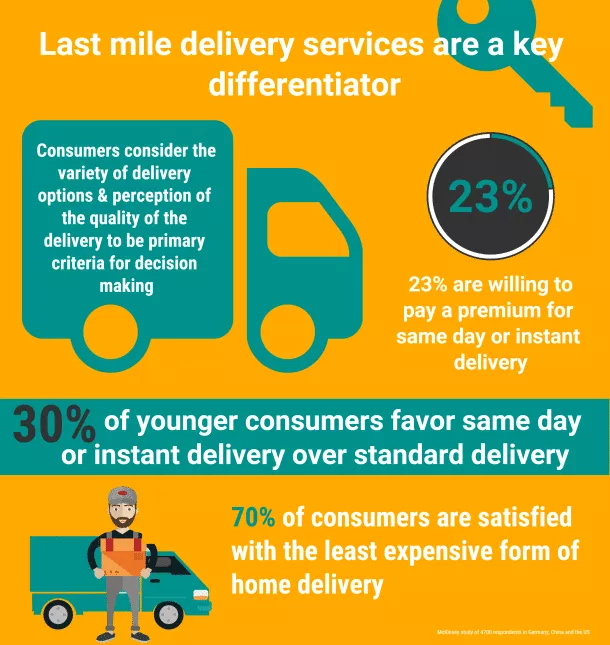
The last mile of the supply chain is typically the most costly, problematic and inefficient. Delivering to residential consumers as compared to businesses is inherently less efficient. Having obsolete inventory in warehousing and storage facility usually results in a drag on productivity. It has taken creativity, technology and a trend towards the gig economy to craft an array of solutions to the variety of challenges that this presents. No matter the situation, there are challenges in last mile logistics for both rural and urban areas.
Technology can play a vital role in streamlining order fulfillment and delivery. Whether retailers choose to outsource their needs to a 3PL, traditional shipping carrier such as USPS, FedEx or UPS or take advantage of the trend in crowdsourcing, technology can make last mile delivery less challenging. Mobile computing solutions, barcode scanners and barcode readers to sophisticated, agile supply chain software and artificial intelligence can help expedite order fulfillment, provide real time traceability of packages and help ensure supply chain operational efficiencies.
The supply chain logistics network in North America is facing a labor shortage. Today’s worker does not face the same working conditions of those faced by the previous generation. The gig economy has enabled an independent workforce, available to ebb and flow on demand. Providing home delivery transportation services on a per assignment basis tends to work well for this population. In the past few years, the Silicon Valley is pushing the expansion of the “on demand” gig economy hard.
The last mile of the supply chain is typically the most costly, problematic and inefficient. Delivering to residential consumers as compared to businesses is inherently less efficient. Having obsolete inventory in warehousing and storage facility usually results in a drag on productivity. It has taken creativity, technology and a trend towards the gig economy to craft an array of solutions to the variety of challenges that this presents. No matter the situation, there are challenges in last mile logistics for both rural and urban areas.
Technology can play a vital role in streamlining order fulfillment and delivery. Whether retailers choose to outsource their needs to a 3PL, traditional shipping carrier such as USPS, FedEx or UPS or take advantage of the trend in crowdsourcing, technology can make last mile delivery less challenging. Mobile computing solutions, barcode scanners and barcode readers to sophisticated, agile supply chain software and artificial intelligence can help expedite order fulfillment, provide real time traceability of packages and help ensure supply chain operational efficiencies.
The supply chain logistics network in North America is facing a labor shortage. Today’s worker does not face the same working conditions of those faced by the previous generation. The gig economy has enabled an independent workforce, available to ebb and flow on demand. Providing home delivery transportation services on a per assignment basis tends to work well for this population. In the past few years, the Silicon Valley is pushing the expansion of the “on demand” gig economy hard.
Auto311